[Original by Mariko OMURA, Cambodia Project (July 21, 2020); Translated by J. Tsuchiya/A. Taguchi]
I am Mariko Omura, the JVC Cambodia Office Representative. First, I would like to write about the novel coronavirus in Cambodia. Recently, new cases of infections were confirmed only at the airport quarantine stations and there has been no case of community transmission. In July, amusement facilities such as karaoke bars were allowed to open if they are registered as restaurants. Selected schools may also be able to reopen if they are eligible for early reopening. So far, the total number of confirmed cases is 141. Little by little, people are trying to return to normal life. But I am still temporarily working remotely in Japan.
Dug eight reservoirs and three wells in March and April
From late March to the end of May, we avoided activities that can make the villagers anxious, since we gave top priority to prevent the spread of COVID-19 in the rural areas. We refrained from visiting the villages as much as we could and stopped training activities that required gatherings. However, on two occasions during that time, we urgently provided hygiene products and food assistance in cooperation with the administration.
In March and April, the minimum possible number of staff visited the planned sites for excavation and managed the progress of the eight reservoirs and three wells that needed to be dug (or repaired) before the rainy season, which usually begins around May. Today, I would like to report on this.
Meeting to select excavation sites (February ~ March)
We took the same selection procedure as we did last year. We selected several possible sites through a feasibility study in each village and then held a plenary conference attended by villagers and the village headmen to finally make a decision. This year, we figured out that we needed to excavate in four villages, so we had four such meetings from the late of February to the beginning of March in each village. Now, I’m remembering those days fondly when it was still OK to get together.
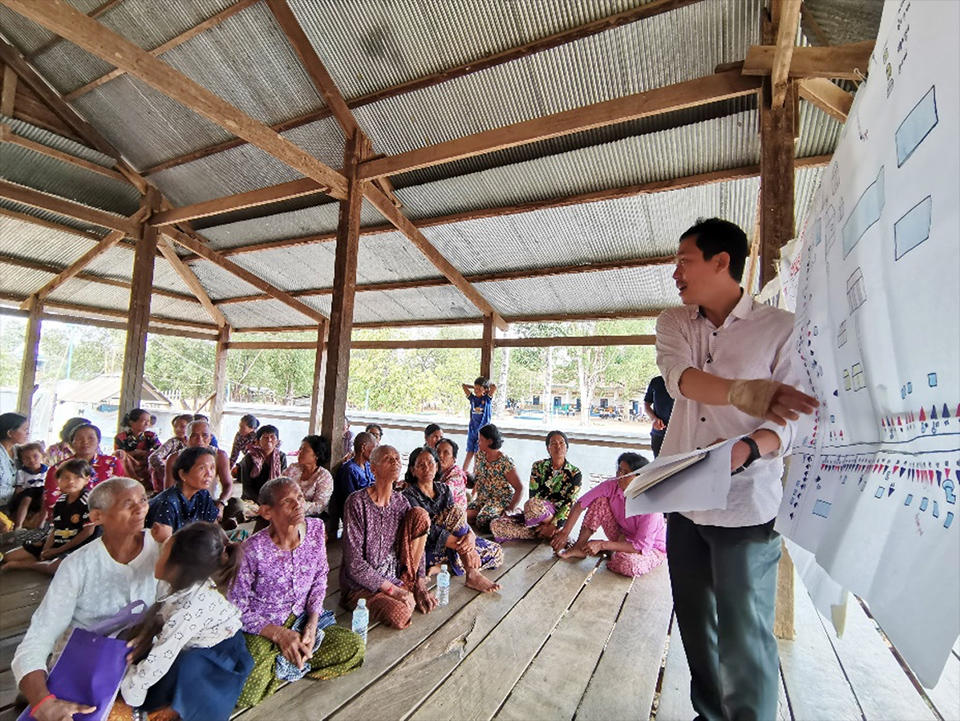
Chetra, the manager, described the candidate sites and explained the map made by JVC based on the feasibility study.
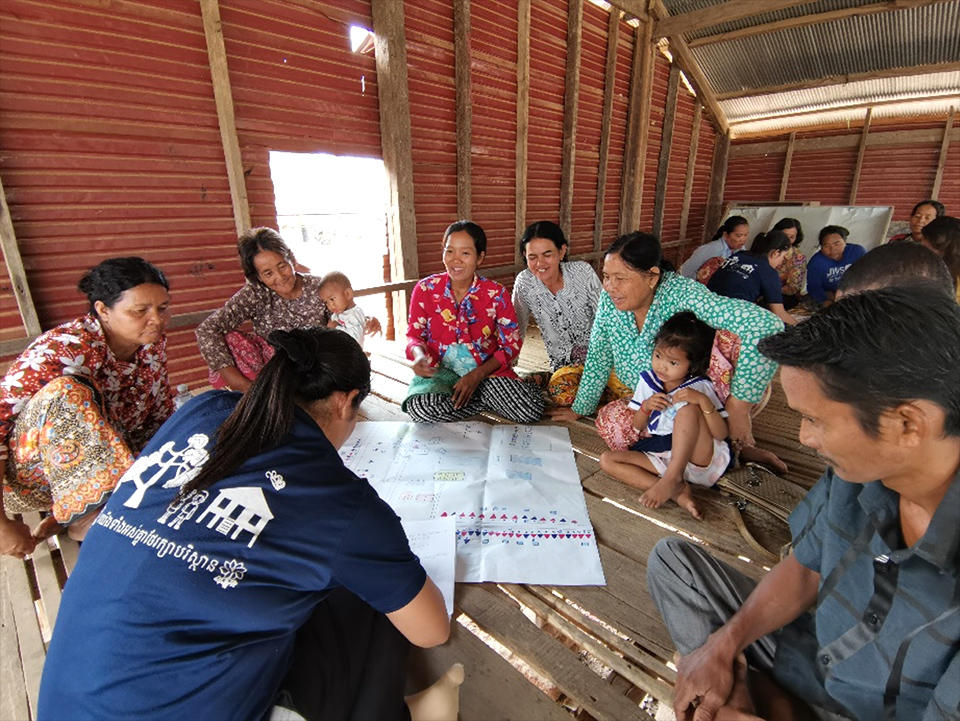
After the whole picture was explained, villagers were divided into small groups to confirm and discuss details.
Excavation started (Mid-March ~ April)
The sites have been determined and we carried out a field survey with a drilling operator in the village to start the excavation.
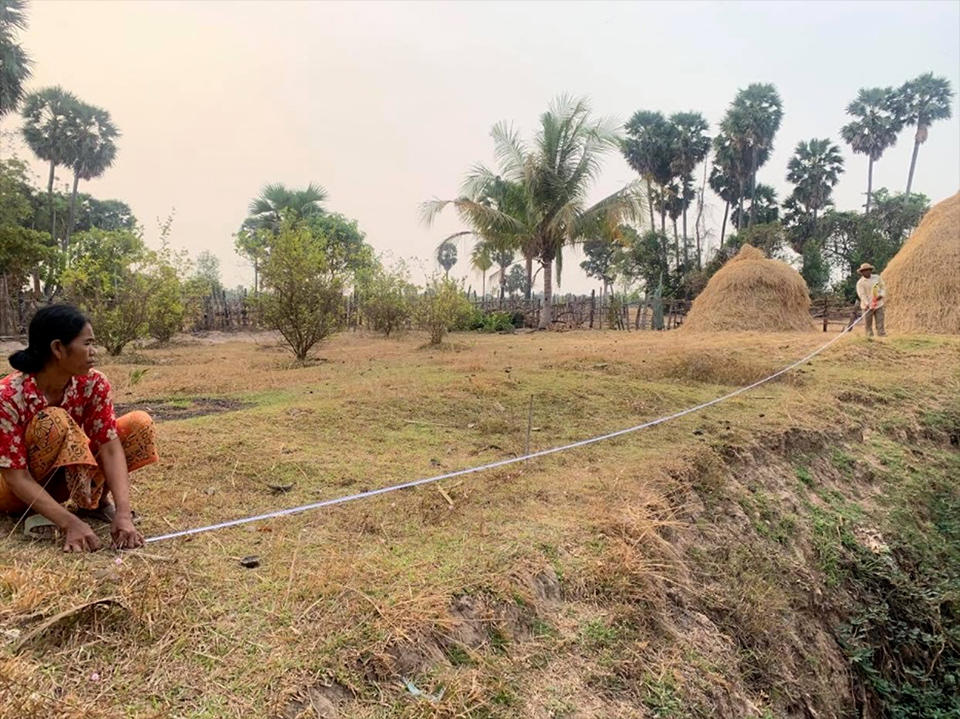
This is how the survey was conducted. The man seen at the distance is the drilling operator.
This time, we repaired a collapsed reservoir which the villagers dug unsuccessfully by themselves.
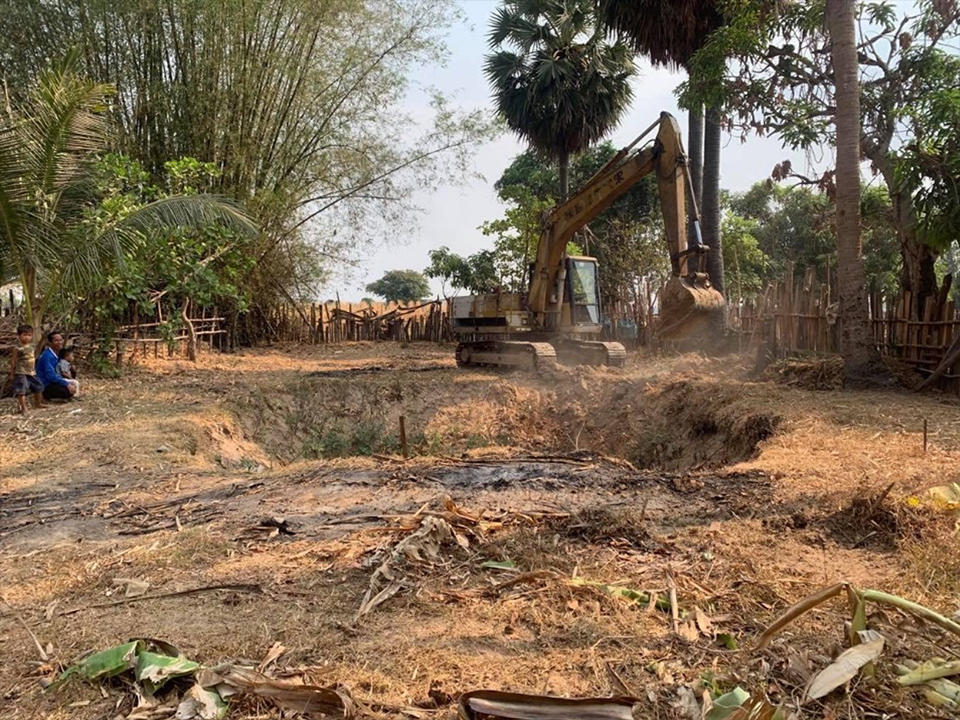
Before the repair: The reservoir had been abandoned after an unsuccessful drilling.
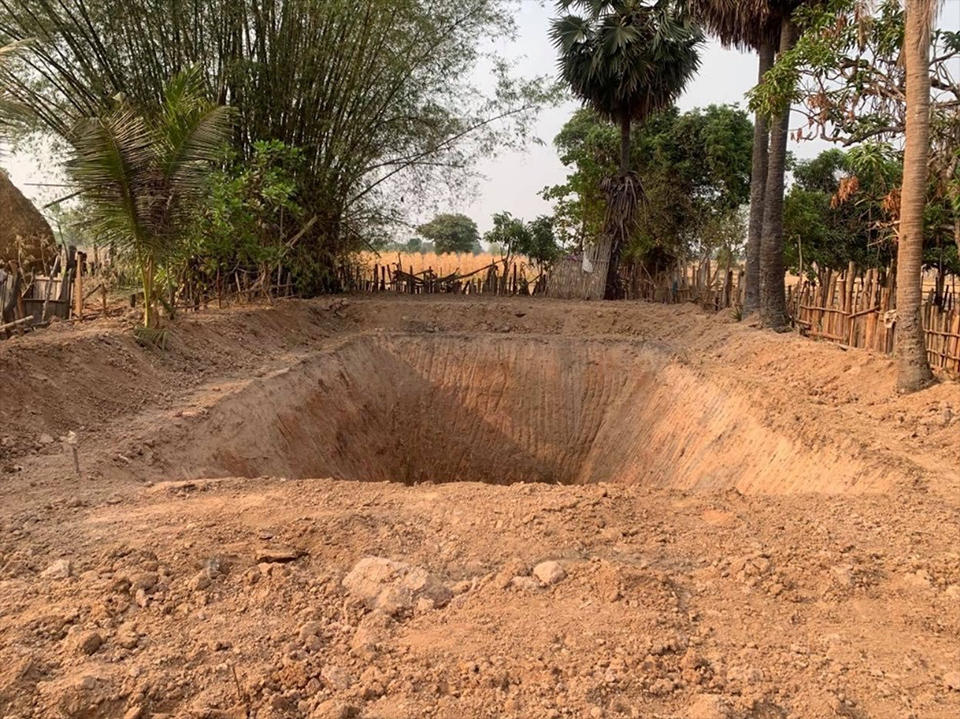
After the repair: Well done! That’s the work of a professional drilling operator!
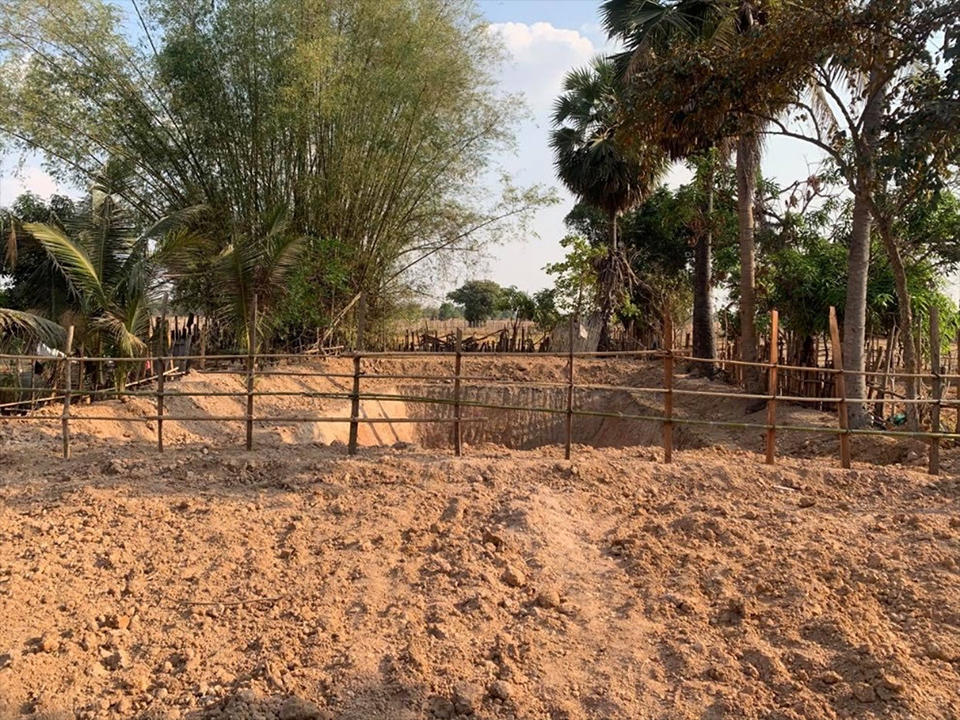
We asked the villagers to build a fall prevention fence by themselves.
Mr. Sochea, the drilling operator, told us that he uses a secondhand excavator originally made in Japan which he bought about ten years ago at a secondhand shop in Phnom Penh. He is from the village where we operate. Therefore, he was glad to see lives in his village improve little by little through his work.
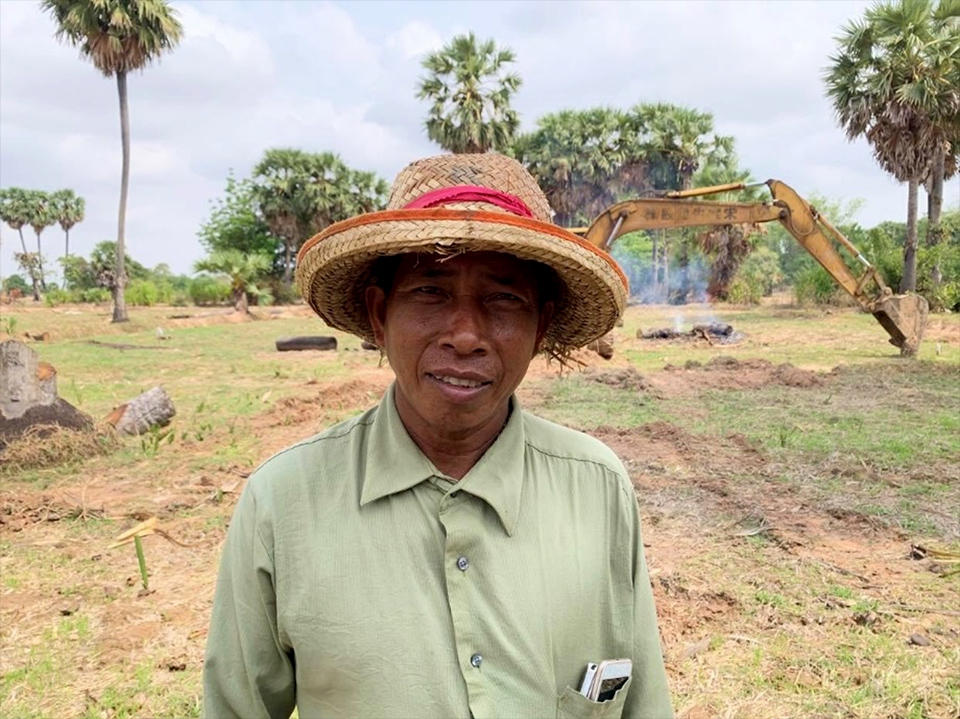
We asked the villagers to build a fall prevention fence by themselves.
We finished the excavation of eight reservoirs, repaired some, and dug three wells in about a month!
After excavation (May ~ present)
In May, it started to rain a little bit, and the reservoir started to store some water.
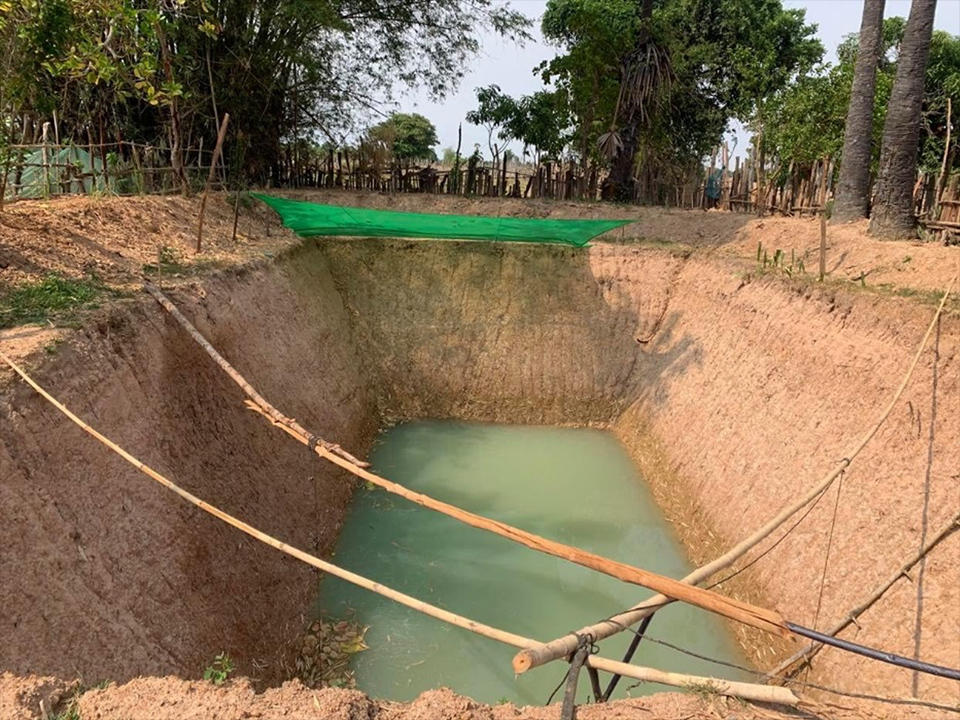
Mid-May.
In June, JVC was able to restart the training little by little, abiding by the government and village rules. We provided training for vegetable gardening using the water from the accomplished reservoirs. Currently, we limit the training to five participants at a time. Little by little, the scenery around the reservoirs have changed into a greener one.
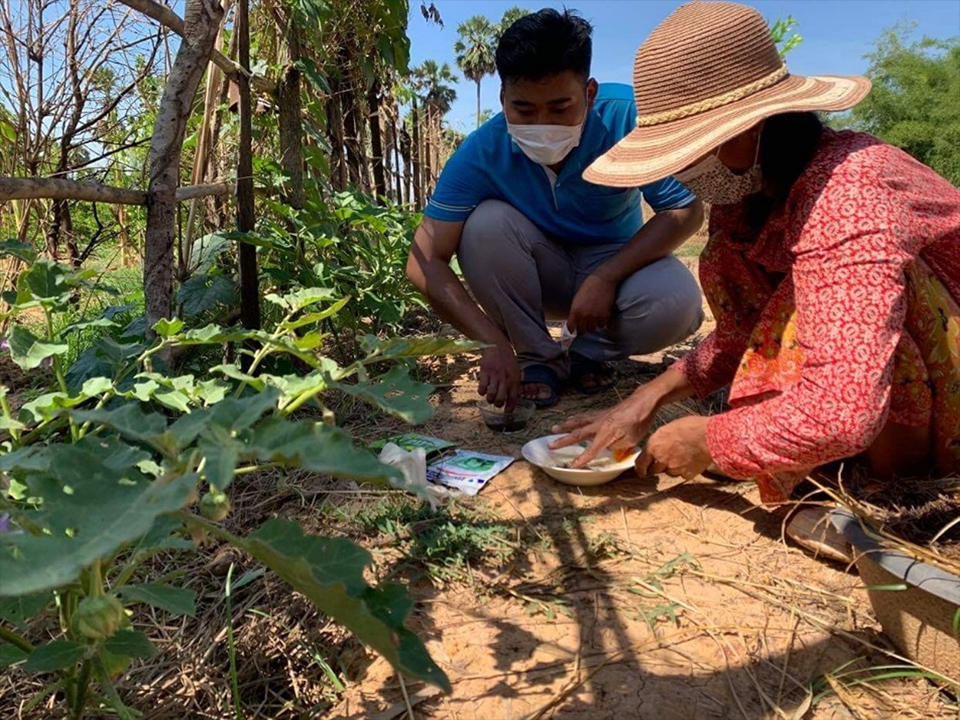
Mid-June.
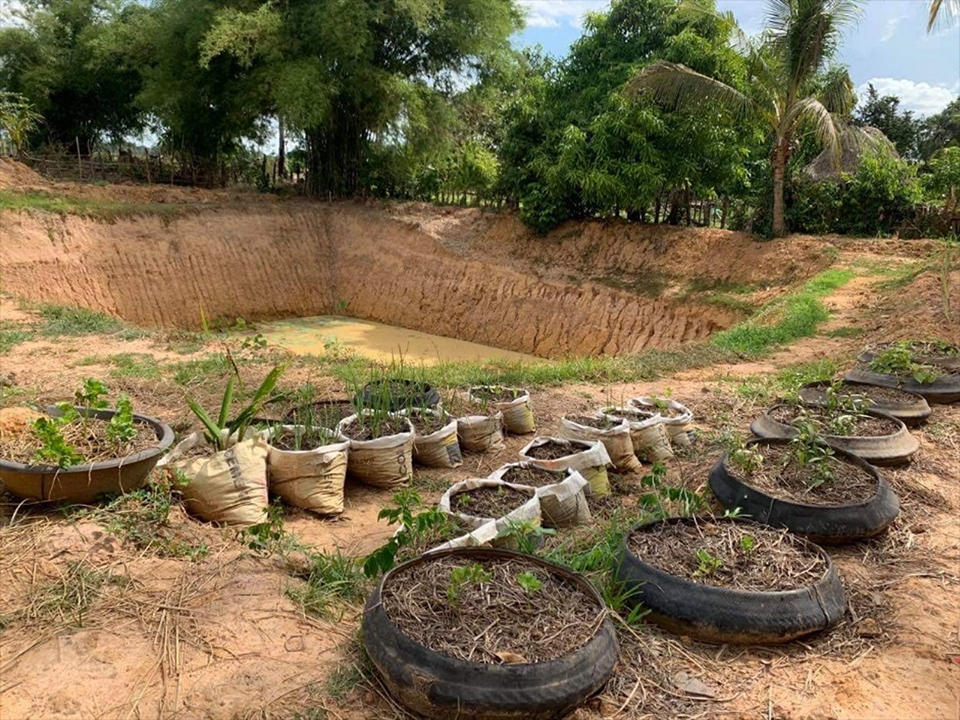
Early-July.
The full-scale rainy season will start soon in Cambodia. I am going to report again how these newly-dug or repaired reservoirs will be used.
Villagers’ voices
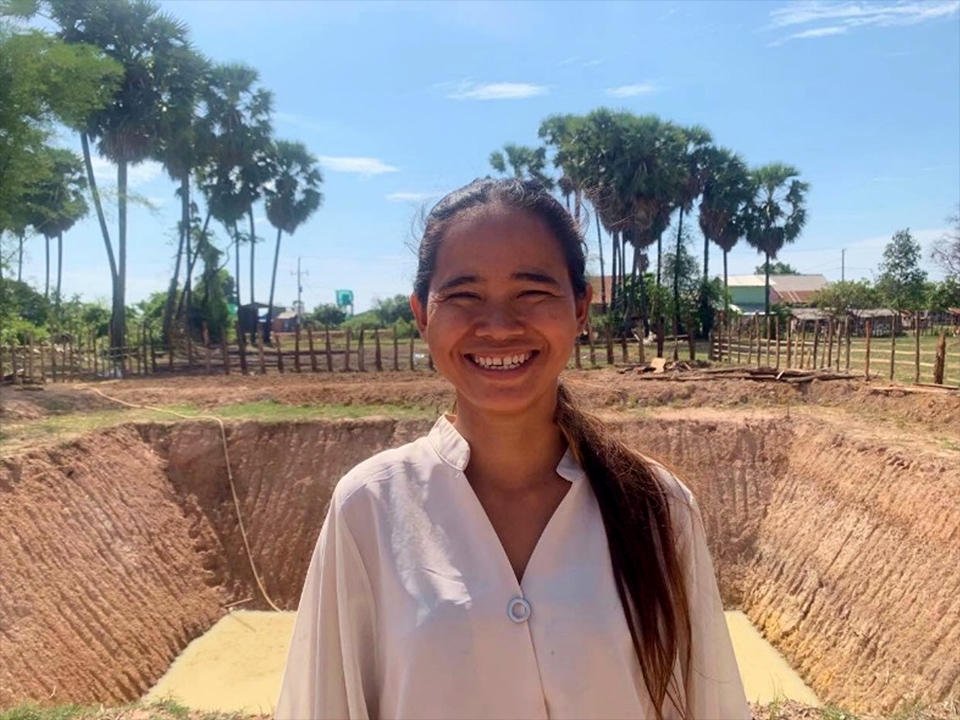
Ms. Khut Seang.
“I have eight brothers and now live with my mother who is 60 years old. She is so glad to have a water resource nearby because it is my mother who uses water mainly in our house. I am thinking about planting lemongrass, moringa, garlic, and other trees like passion fruit. I am preparing with the support from JVC. I am going to use the reservoir carefully with my neighbors!” (Ms. Khut Seang, 31 years old)
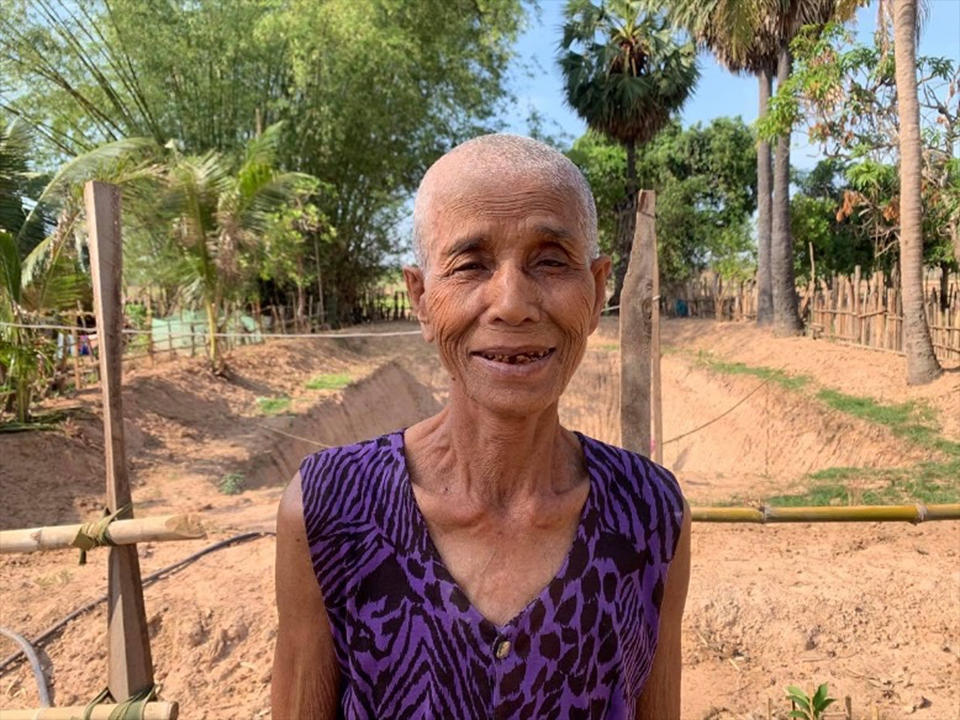
Ms. Sin Meas.
“I am old, and, in addition, there are no male members in my family. This reservoir saves me the trouble of bringing water from far away. It’s so helpful.” (Ms. Sin Meas, 77 years old)
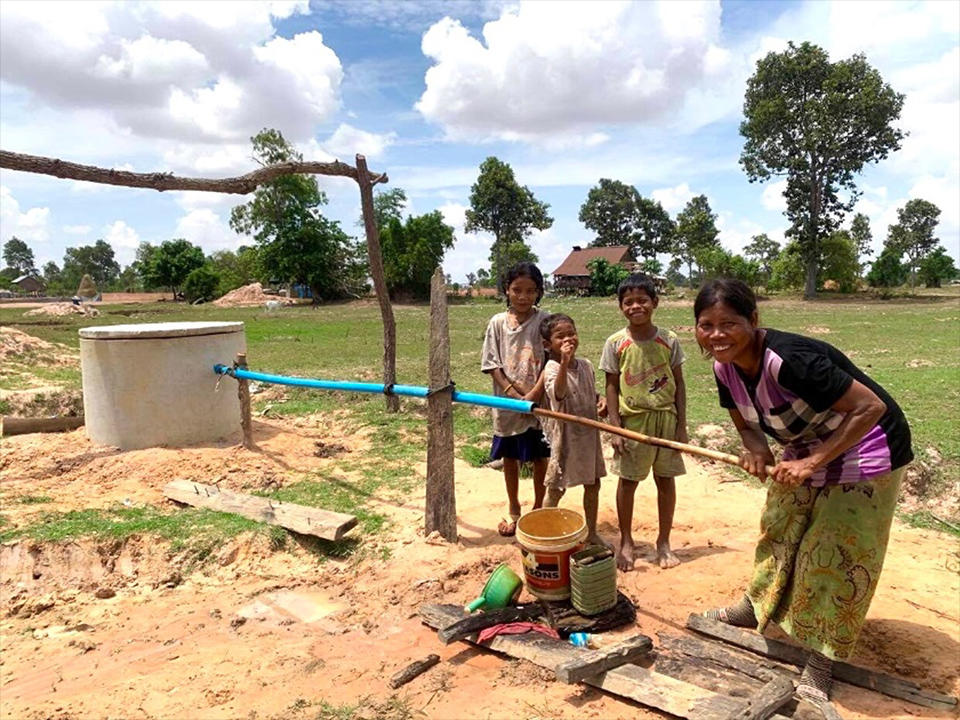
We dug a well where there is no space for digging a reservoir and water resource is hard to access.
